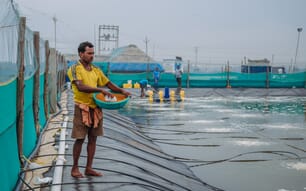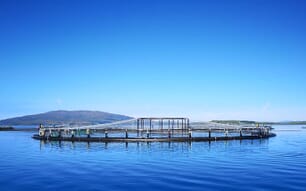
© Phibro
Streptococcus iniae and S. agalactiae are Gram-positive bacterial pathogens of cultured and wild fish. They are spherical or ovoid in shape and 0.5-2.0 μm in diameter. They occur in pairs or chains when grown in liquid media, are non-motile and non-spore-forming.
They are facultatively anaerobic, requiring nutritionally rich media for growth, and commonly attack red blood cell to produce greenish discolouration (α-haemolysis) or complete clearing (β-haemolysis) on blood agar. Both bacteria may present zoonotic concerns.
S. iniae infects immunocompromised patients who have handled live fish. Comparative genomic analysis of piscine S. agalactiae isolates suggests that human strains of S. agalactiae are present in fish, frogs and aquatic animals, thus posing a potential risk for human disease. S. iniae was one of the main pathogens affecting warm water fish species in the late 1990s and 2000s. Presently, S. agalactiae has emerged as the major pathogen in cultured tilapia (Oreochromis spp.) in Asia and in Latin and South America. The annual worldwide monetary loss due to these pathogens was originally underestimated at US$100 million. China alone accounts for about 40 percent of global tilapia production (~US$3 billion), and Chinese producers have reported losses of 30–80 percent due to S. agalactiae. Assuming an annual average loss of 40 percent, that equates to about US$1 billion in lost revenue in China alone.

© Phibro
Transmission
Streptococcus spp. are transmitted horizontally through the water, with newly introduced carrier fish being the source of infection. The pathogens can persist in water and sediments near fish farms for over a year. Faecal–oral transmission can occur when infected dead fish are fed to fish. It has demonstrated that oral gavage S. agalactiae entered red tilapia (Oreochromis sp.) through the gastrointestinal epithelium, causing septicaemia. However, an alternative route – via the nares, skin and gills – cannot be ruled out. Regardless, the removal of dead and moribund fish should be a priority for farmers, because these fish shed the pathogens.
The vertical transmission of both S. iniae and S. agalactiae was suggested in tilapia because bacteria were detected both in fertilised eggs and in the resultant progeny. The potential for vertical transmission makes the control of
S. iniae and S. agalactiae problematic.
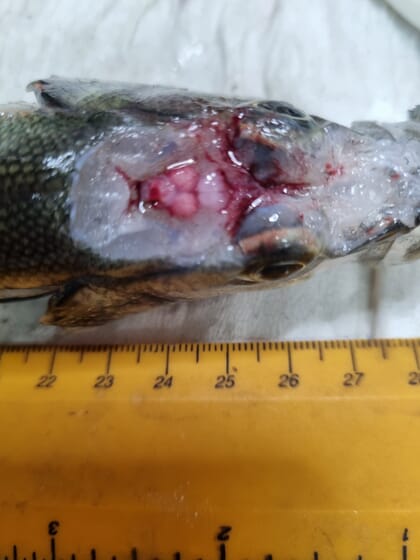
© Phibro
Geographical distribution
S. iniae and S. agalactiae are distributed worldwide and infect more than 27 species of fish, including tilapia. Both pathogens affect wild and farmed species in fresh, brackish and marine waters.
Etiology of the disease
Stress is often the major predisposing factor of this disease. Some of the stressors that have been linked to Streptococcosis outbreaks include water temperatures outside the optimal range (24–30°C), high salinity and alkalinity, low dissolved oxygen (DO), high fish stocking densities, and high feeding rates, as well as the effects of harvesting (netting and handling).
Co-infection with external parasitism (e.g., Trichodina, Gyrodactylus, and Ichthyophthirius infestations) is also common.

© Phibro
Diagnosis
Clinical signs of disease
Clinical signs vary with the species of coccus, and the species and size of the host affected.
- In general, fish become lethargic and swim erratically or in spiral fashion as a result of an evident meninge-encephalitis.
- Uni- or bi-lateral exophthalmia (“pop-eye”), with haemorrhage and corneal opacity in the eye.
- Petechial haemorrhage,
- Oedema with accumulation of serosanguinous fluid in the peritoneal cavity and intestine.
- Pale liver and a dark red spleen are the most common clinical signs.
- Jaw and caudal pustules in dead and surviving S. iniae-infected Nile tilapia. Similar lesions are also associated with S. agalactiae infection, along with buccal paralysis.
- In some cases, infected fish do not show obvious clinical signs before dying, and death is attributed to septicaemia, with infection of the brain and nervous system.
- As the infection progresses, a significant portion of the population may become anorexic and refuse to feed.
- Internal examination of the coelomic cavity reveals large amounts of blood-tinged fluid, an enlarged and dark-red spleen, a pale liver, and fibrin deposits on the heart.
- Histopathology reveals widespread necrosis and granulomatous inflammation of multiple organ systems, including the head and trunk kidney.
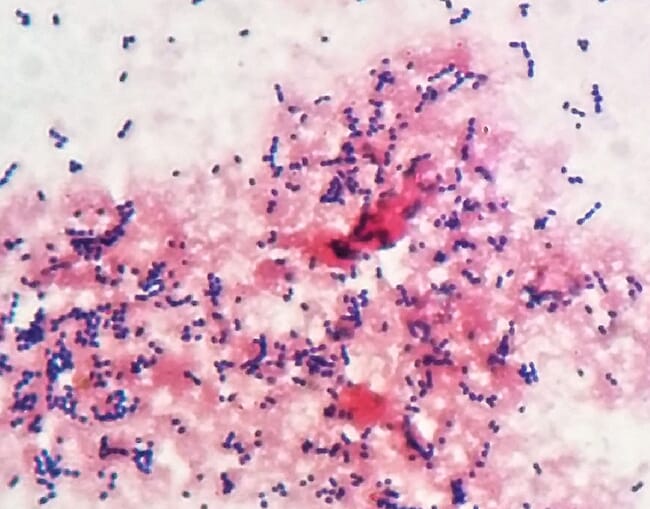
© Phibro
Diagnosis of infection
Diagnosis relies on culture of the bacteria on 5 percent sheep blood agar plates. The kidney and brain of fresh fish are typically the best source for culturing the bacteria. Miniaturised rapid systems are useful and S. agalactiae is readily identified by the API 20 Strep and API rapid ID 32 Strep test kits. Commercial kits can be used to obtain a biochemical profile, but a positive identification cannot always be reached with these systems alone. Confirmation should be sought using molecular methods.
A tentative diagnosis of Strep can be made from the history and clinical signs, necropsy findings, and identification of Gram-positive bacteria from stains of impressions (produced by blotting sections of fresh tissues onto a glass slide) from the brain, spleen, kidney or liver.
Prevention and control strategies
Prevention of disease is always preferable and more profitable than treatment of disease outbreaks.
The control and/or prevention of S. iniae or S. agalactiae is best incorporated into fish health management plans that rely on sound fish husbandry, including biosecurity, maintaining the water quality and proper nutrition.
High productivity in tilapia farming is achieved by balancing stocking density with survival and performance. When mortality increases, decreasing the stock density can reduce fish stress and pathogen load, and farmers must balance stocking rates to maximise production with limiting the risk of disease due to poor water quality and enhanced disease transmission.
Extreme precautions should be exercised when introducing broodstock or eggs into a new or existing brood facility. The disinfection of fish eggs
infected with S. iniae or S. agalactiae is difficult. Chemicals that are approved for use on the eggs of food fish are surface disinfectants that can reduce pathogen presence on the egg’s shell but have limited efficacy on bacteria within the fish eggs. Fish eggs and fry should, therefore, be obtained from pathogen-free sources.
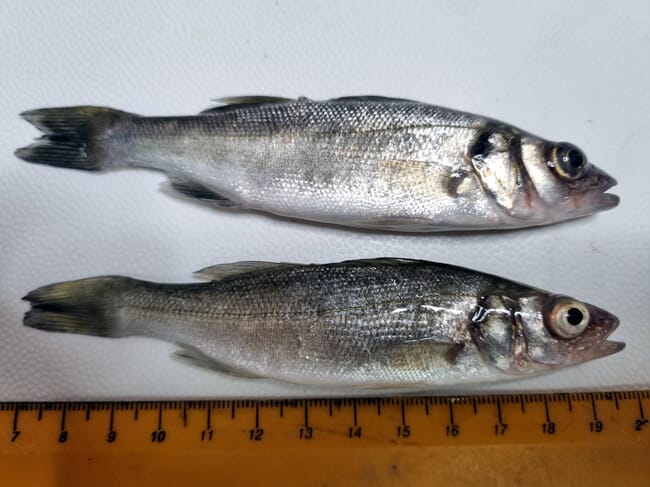
© Phibro
1) Chemotherapy
Prudent antimicrobial therapy is an essential tool for aquaculturists when other strategies fail to maintain fish health.
Ideally, after the bacterium has been identified from a sick fish, a sensitivity test should be conducted to select the most effective antibiotic to use.
The ability of streptococci to survive in macrophages reduces the effectiveness of antibiotic treatment, as the macrophages will actually protect the bacteria from the antibiotic; infected macrophages later rupture to release the bacteria back into the bloodstream.
The prophylactic use of antimicrobials is prohibited in many countries, and the judicious use of antimicrobials is encouraged worldwide.
2) Vaccines and vaccination
The application of vaccines against pathogenic diseases in aquaculture is one of the most widely accepted preventive measures. Vaccination strategies for S. iniae and S. agalactiae have relied on killed vaccines.
In recent years, vaccines have received considerable attention for the prevention of streptococcosis in tilapia, because they can induce and develop resistance to infection in the fish host; this continues to be a common practice in fish disease prevention. Moreover, several serotypes for S. agalactiae infections in Nile tilapia have been reported, such as types Ia, Ib and III.
Injection is the least cost-effective in terms of labour and time. Meanwhile, killed vaccines are considered safer than the modified live vaccines, which may revert to virulence. Consequently, future trends may include oral delivery of vaccines, immersion delivery of killed vaccines, development of additional modified live vaccines and multivalent vaccines and improved vaccine adjuvants and immunostimulants. Vaccines prevent disease and mortality, but they may not completely eliminate streptococci in surviving fish.
Currently, two types of vaccines are the most common:
- Commercial vaccines: which are licensed vaccines that enable an aquatic species to build a host immune response.
- Autogenous vaccines: which are made from the pathogen that is causing the disease in a particular fish population. These vaccines are made by taking a sample of the pathogen from the infected fish and then growing it in a laboratory. The vaccine is then made by killing the pathogen and using it to stimulate an immune response in the fish.
3) Probiotics, prebiotics and symbiotics
The use of probiotics, prebiotics, symbiotics and synthetic compounds to improve immune response and enhance the ability of fish to resist diseases has attracted considerable interest in recent years.
A probiotic is defined as a product containing live microorganisms that positively affect the intestinal microbiota of the host by inhibiting the proliferation of pathogenic bacteria, thereby enhancing the growth and development of beneficial bacteria. Generally, the preventive effect of probiotics can take place either through direct introduction into culture water or via dietary administration. Administration of probiotics in culture water is considered the best method since it is applicable to all ages of fish.
Prebiotics are defined as non-digestible food ingredients that selectively stimulate the growth and/or the metabolism of health-promoting bacteria in the intestinal tract, thus improving an organism’s intestinal balance.
A symbiotic is a dietary supplement that combines probiotics and prebiotics, which beneficially affect the host animal by improving its intestinal balance, health, and growth.
Some synthetic compounds have also been reportedly used to prevent streptococcosis in tilapia by boosting the fish’s immunological parameters. For example, the synthetic compound mannan-oligosaccharide, when used as a feed supplement for Nile tilapia, has been shown to improve the growth and disease resistance of the fish against S. agalactiae.
4) Selective breeding
Selective breeding involves choosing fish with desirable traits and breeding them to produce offspring with those same traits. One of the traits that can be selected for is disease resistance. Disease resistance is universally heritable, which means that there is enormous potential for selecting fish with improved resistance to key diseases1.
There are a number of current methods followed for selective breeding for disease resistance in aquaculture. These include family selection, mass selection, and hybridisation.
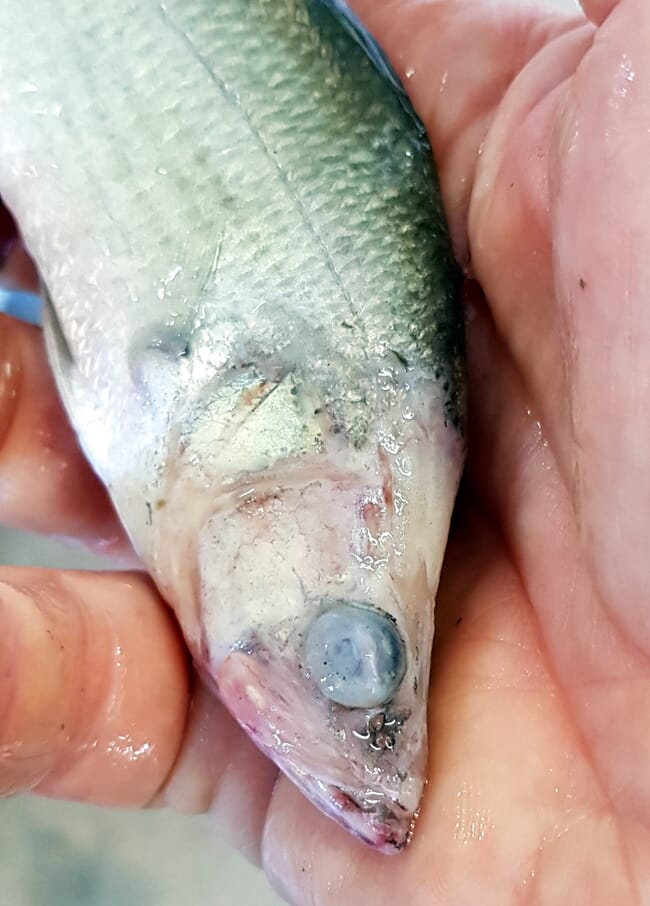
© Phibro
5) Fish health management
Fish health management refers to management practices that are designed to prevent fish diseases and hence the resulting loss (death) that follows. Successful fish health management begins with the prevention of disease rather than cure.
There are several efficient health management tools that can be used in mitigating most losses due to diseases:
- Biosecurity: Biosecurity in aquaculture consists of practices that minimise the risk of introducing an infectious disease and spreading it to the animals at a facility and the risk that diseased animals or infectious agents will leave a facility and spread to other sites and other susceptible species. These practices also reduce stress to the animals, thus making them less susceptible to disease.
- Quarantine: Quarantine programmes should be designed whenever introducing new fish fry at the farm to avoid any possible transmission of the pathogen.
- Water quality management: Environmental conditions (eg salinity, DO levels, pH, salinity and temperature), as well as poor farm management practices (eg poor nutrition, high stocking density, and overfeeding) can lead to stress, making the fish more vulnerable to pathogens. Streptococcus is an opportunistic pathogen, which often leads to disease outbreaks when the fish are exposed to stressors in culture facilities, such as poor water quality. Hence, the mere presence of the pathogen in an aquaculture facility does not necessarily cause the disease.
- Good farm management practices: Fish handling activities are among the major stressors of fish in aquaculture operations. Fish handling activities in aquaculture include handling during transportation, injection, artificial reproduction, weighing, marking, tagging and counting. These activities stress the fish and sometimes cause physical injuries, which may make the fish more susceptible to a streptococcosis outbreak. Farmers should therefore ensure minimal handling of the fish to safeguard their health by minimising or eliminating every possible stressor that contributes to disease outbreaks.
- Feed and feeding management: A partial reduction in feeding rate or a short-term exposure to fasting may help to control or decrease fish mortality during streptococcosis outbreaks. This is because feeding facilitates propagation of bacteria in the water, and uneaten or excessive feed may further deteriorate the water quality. Furthermore, the use of contaminated fish feeds can also prolong the outbreak of streptococcosis in the fish.
S. iniae and S. agalactiae are economically important pathogens of wild and cultured fish worldwide. As a rule of thumb, disease prevention is more desirable than controlling the outbreaks due to associated costs. This may be possible through strict observation of biosecurity measures at both the national and farm levels.



